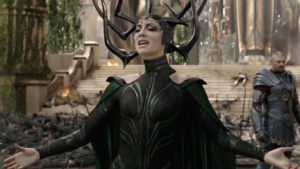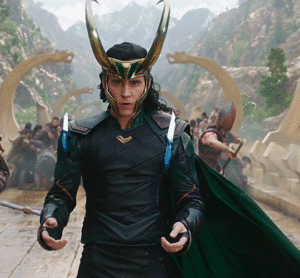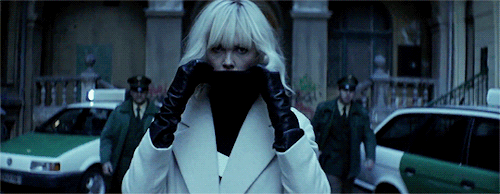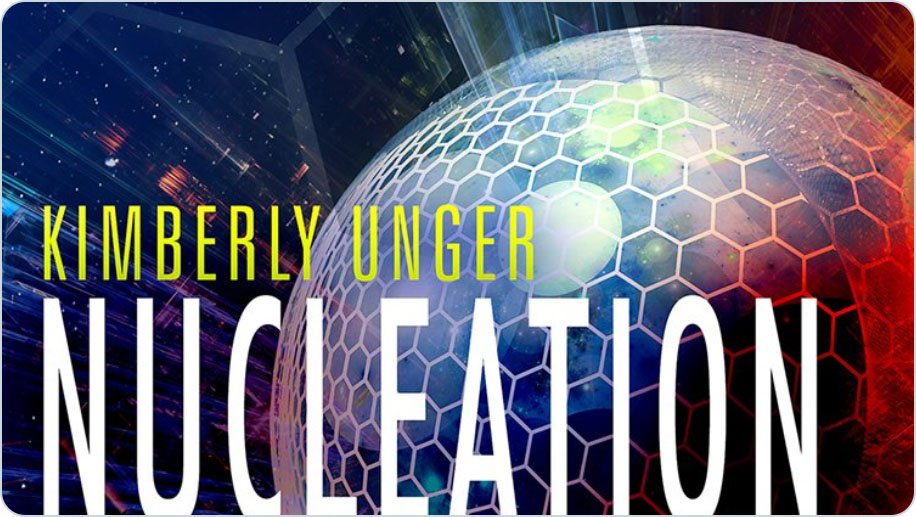OK so let me wax a little bit poetic about the costuming in Thor Ragnarok, and a little more specifically how they may be telegraphing a new arc for Loki post-Ragnarok.  I am, as anyone who’s taking one of my classes will tell you, a huge fan of the use of color subtext in film and other visual media. It’s subtle, it’s often clever and it can be as big an emotional driver as sound and story in the right hands.
Colors are chosen for a reason. You get that right? Much has been made of Superman’s “red/white/blue” color scheme or Batman’s transitions between blue or black capes and cowls during different periods of his run. In any society, even in contemporary society, colors mean things. In the United States red is used for love, white or silver is used for purity, you get the kind of thing I mean. This subtext is going to change depending on where you live, but with the globalization of media, those lines are getting blurred all the time. Right now, however, there is a color language that everyone innately understands because of their cultural context, even if they can’t call out the meanings case by case.
In Thor Ragnarok, Loki, who up until now has been our favorite mischievous evil-doer, has his look and his top black-sheep status swiped by Hela.  His older, adoptive sister storms into the film in her own iconic green and black threads and her own stunningly horned headgear.Â
And then she promptly kicks everybody’s ass, essentially making Loki look like he’s been playing dress-up in his big sister’s vampy heels, rather than embracing evil on a serious and visceral level. As far as “evil” is concerned, Loki is and has been a poser.
 Loki in his green Asgardian “super suit”at the start of the film.
Loki in his green Asgardian “super suit”at the start of the film.
When we next see Loki his color palette has changed.  He hasn’t gone with the primary-colored stylings of his brother (who undergoes his own costume-transformation) but rather than the green and black and gold-tones we have become accustomed to seeing as Loki’s “Asgardian super-suit”, everything is cast much more blue.Â
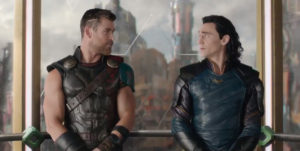 Thor and Loki, post ass-kicking
Thor and Loki, post ass-kicking
He’s ceded the black and green of the “bad-guy” for shades of blue and brown. He’s aligned himself, color palette wise, with his brother (look at how the blue on Thor’s left shoulder brace matches the blue on Loki’s everything). With the good guys. Someone else has taken up the mantle of Big Bad, and Loki has begun to reinvent himself… Or has he?
When we get to the final fight sequence, the green comes back, it’s a lot more subtle, a lot more subdued than Loki was sporting at the outset. BUT, let me draw your attention to those knives Loki’s sporting. See those handles? See that blue there? Whatever change Loki started after Hela took his look is still there and is helping to drive his actions.
The focus of this film is Thor, lets be clear about that, but in the background (playing younger-brother second fiddle as always, I suppose) we’re being shown the start of a change in Loki’s character, possibly with an eye towards an “Agent of Asgard” spin for our favorite almost-villain. I mean, in the mythologies, Ragnarok was the end of all things, followed by a reboot, the world starting over. You wouldn’t have to stretch very far to suggest that, now that Loki’s arc as the “bad guy” is over, that character might evolve into something new.
